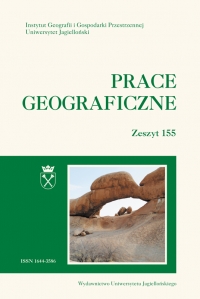Chemical composition of utility water in the arid climate zone on the examples of Kébili and Medenine regions (southern Tunisia)
Chemical composition of utility water in the arid climate zone on the examples of Kébili and Medenine regions (southern Tunisia)
Author(s): Karolina Sobczak-Szelc, Beata Latos, Anna Szczucińska, Rafał Kozłowski, Krzysztof SkockiSubject(s): Energy and Environmental Studies, Physical Geopgraphy, Regional Geography, Environmental Geography, Evaluation research, Environmental interactions
Published by: Wydawnictwo Uniwersytetu Jagiellońskiego
Keywords: hydrochemistry; groundwater; salinity; arid zone; SAR;
Summary/Abstract: Areas located within the hot, arid zone are characterized by extremely low availability of fresh water. In the Tunisian regions of Kébili and Medenine, deep-water sources and connate groundwater constitute its main sources. Surface waters, as well as shallow groundwaters found in those areas, are affected by a high level of salinity, which significantly reduces their use for either drinking or agriculture. Due to intensifying droughts the rainwater accumulation system, neither fulfils the needs of residents nor the developing agriculture. Waters in the oases of El Faour (Kébili) and Beni Kchedeche (Medenine) were analyzed in 2017 to find out their chemical composition, as well as their suitability for irrigation. The chemical composition of the investigated waters is dominated by the Na+, Ca2+, Cl– and SO4 3– ions.
Journal: Prace Geograficzne
- Issue Year: 2018
- Issue No: 155
- Page Range: 139-156
- Page Count: 18
- Language: English

